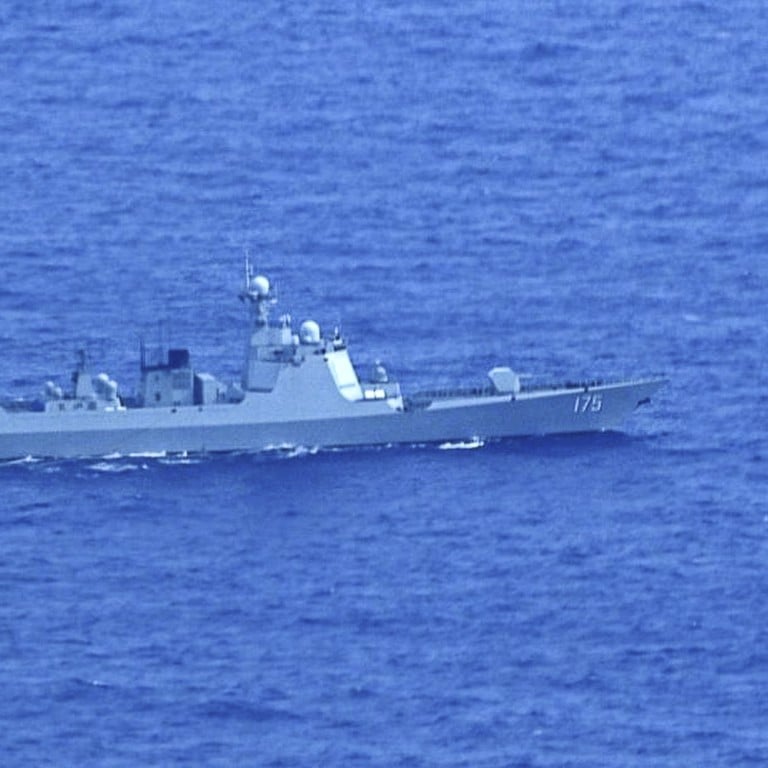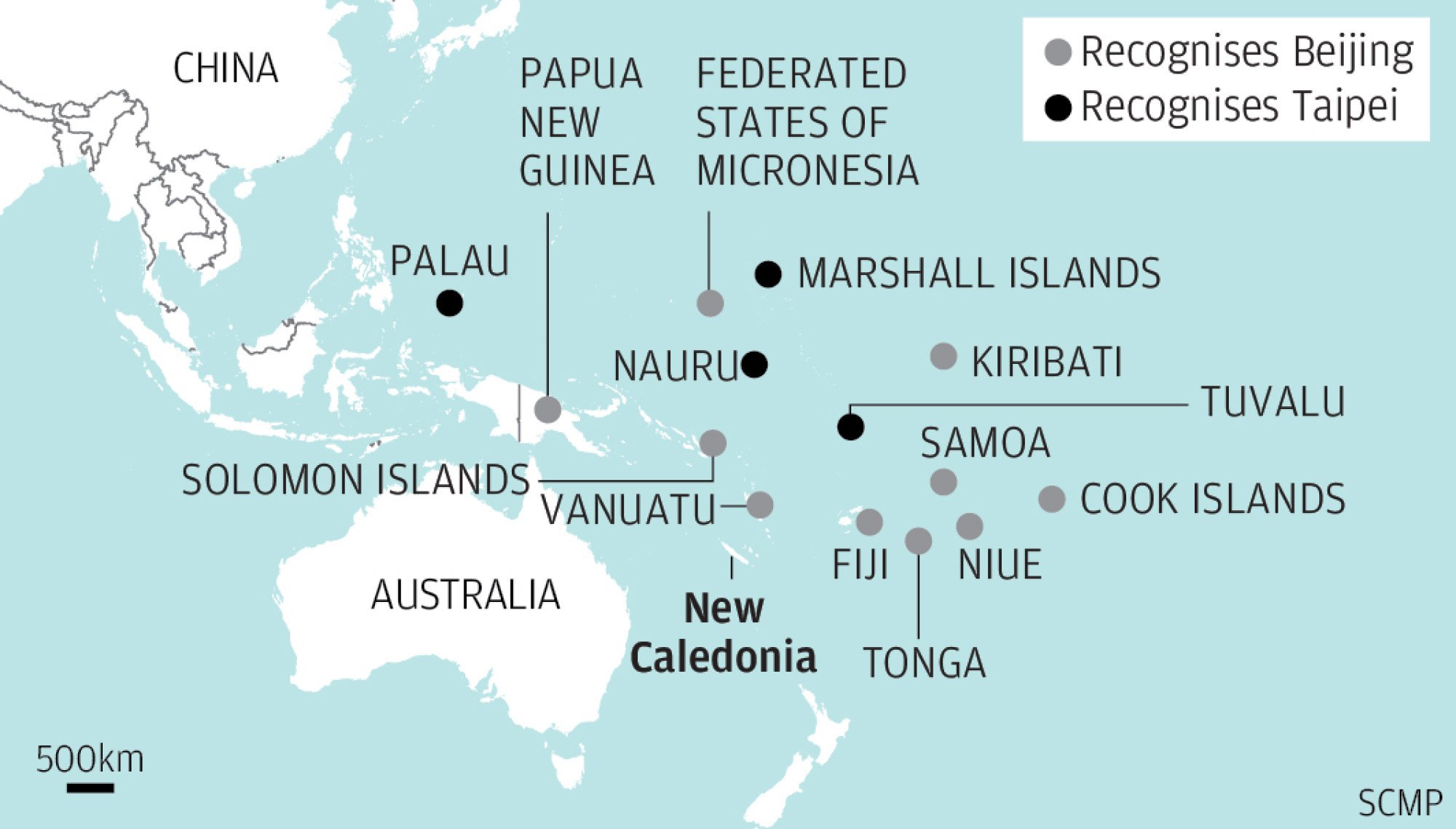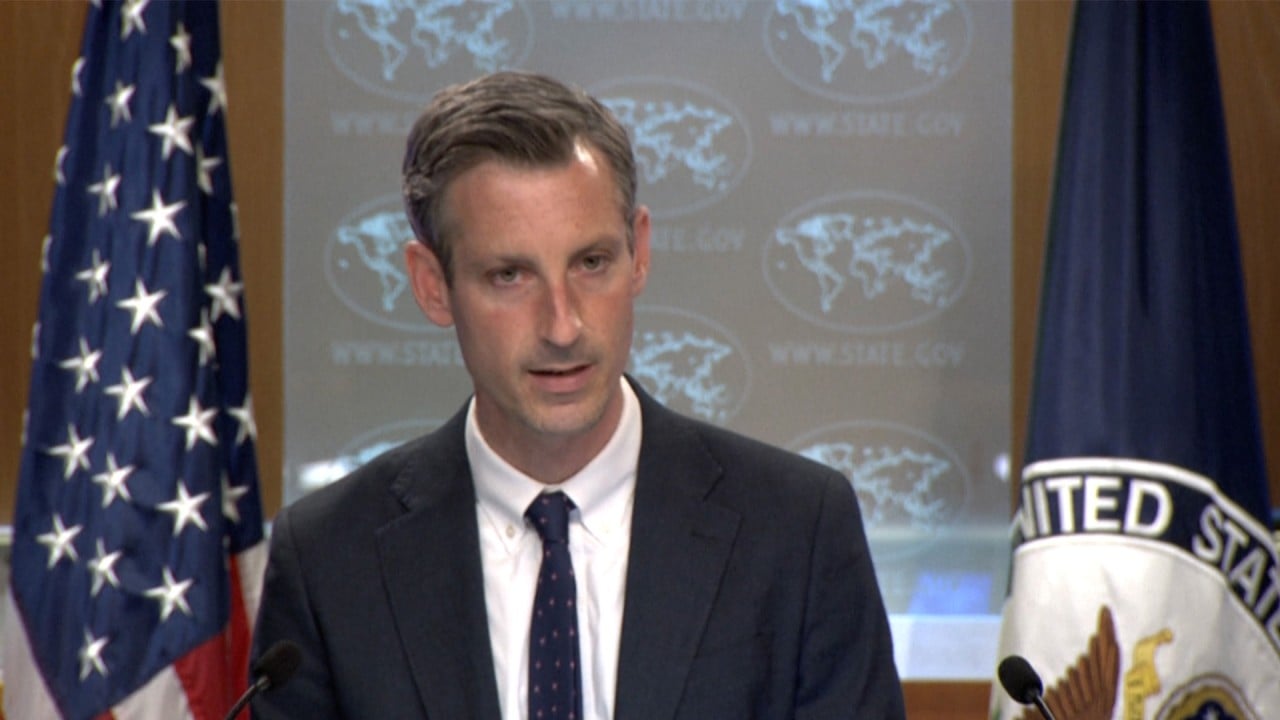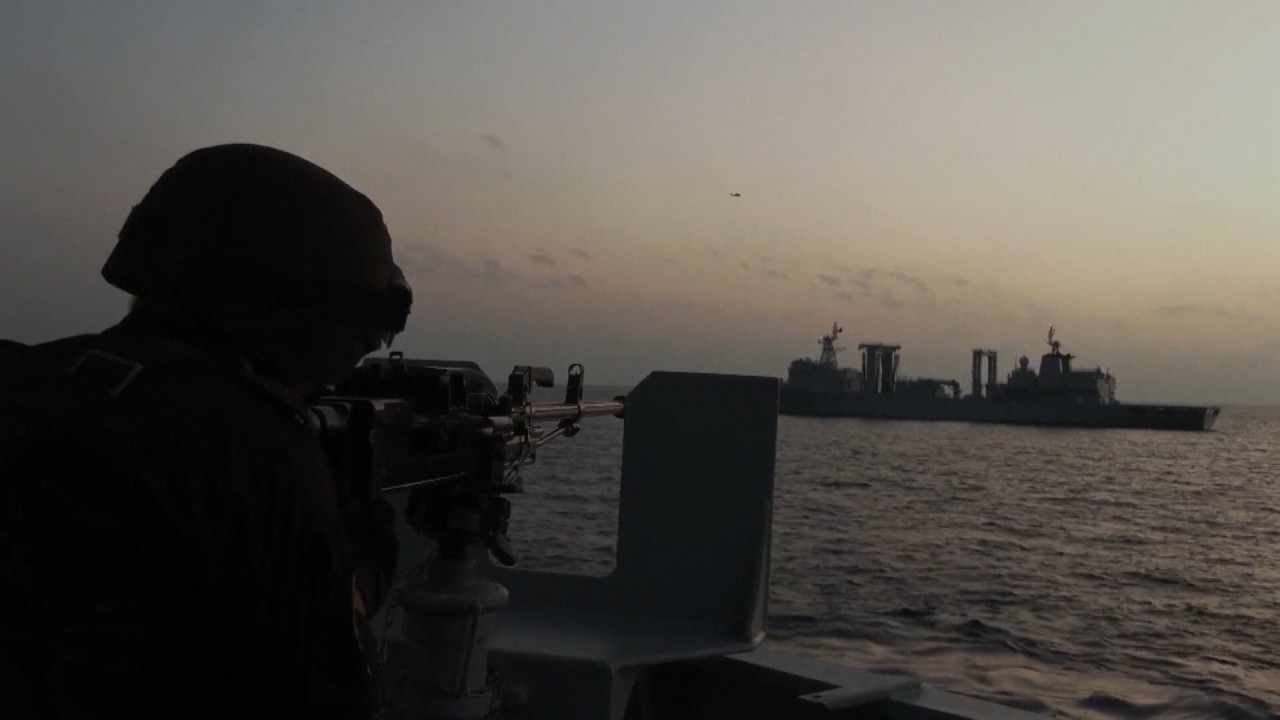
Chinese navy warship spotted in South Pacific may have been on high seas resupply trial run: analysts
- PLA guided-missile destroyer Yinchuan spotted by French military in the South Pacific, far beyond the range sustainable without resupply
- Warship’s trip seen as ‘testing the waters’ for replenishment capacity on voyages further into the Pacific to protect China’s strategic interests
The PLA Navy’s guided-missile destroyer Yinchuan (hull number 175) had been sailing near the exclusive economic zone of New Caledonia, a French overseas territory in the South Pacific, about 1,500km east of Australia, according to a French defence ministry tweet on December 29.
French navy jets tracked and photographed the warship’s activities, it said.
‘Significant’ boost in Chinese navy aims to project power into Pacific: analysts
The Chinese South Sea Fleet’s Type 052D destroyer was also spotted by French jets earlier in December to be sailing near French Polynesia, another overseas territory of France and lying further east in the central South Pacific.
The area it appeared in was tens of thousands kilometres away from the Chinese coast, and far beyond the range the 7,500-tonne destroyer could sustain without resupply, leaving aside the requirements for the return journey.

The PLA Navy’s previous navigation of such long distances usually included supply ships to provide fuel, fresh water, and other necessary provisions, carrying out what are known as “under way replenishment” operations. But this time the Yinchuan was seen sailing alone.
That means the warship either had to gain access to local friendly ports or replenish from other alternative floating logistic assets, explained Collin Koh, a research fellow at Singapore’s Institute of Defence and Strategic Studies.
One possibility was that the Yinchuan might have made port calls in Pacific Island nations in the region, where Beijing has significantly strengthened its economic ties and diplomatic influence.
China and US step up military preparedness in Asia-Pacific region
According to Koh, if the Yinchuan had called at a port in the region, local authorities might have chosen not to announce it, “to avoid yet another public controversy given the recent commotion over China’s growing influence and reported interest to expand its security presence in the region”.
Under way replenishment capacity indicates a navy’s ability to expand and sustain its presence away from home waters.
The PLA Navy has two types of supply ships in service, the 48,000-tonne Type 901 for aircraft carrier strike groups, and the 23,000-tonne Type 903 for smaller flotilla.
For the Yinchuan to go solo for this far-seas cruise does indicate the growing confidence of the PLA Navy, Koh said.
Arranging a replenishment port call involves advance planning, logistics arrangements and no objections from the host country, according to Chinese military commentator Song Zhongping.
“The logistics officers should plan and make contact in advance and, with the host country’s permission, they could visit the port to resupply. That is the international norm,” Song said.
‘Great nation diplomacy’: China renews military exchanges with Asian neighbours
The US Navy can easily access replenishment services around the world because their global hegemony gives them a worldwide network of hundreds of overseas naval bases, Beijing-based naval expert Li Jie said.
“China does not seek that [kind of hegemony], so there aren’t and won’t be many foreign bases,” said Li.
The PLA Navy’s only foreign base so far is in the Horn of Africa nation of Djibouti, which regularly replenishes Chinese warships as they carry out anti-piracy escort operations through the Indian Ocean.
Li said sailing with its own supply vessels will remain the norm for the PLA Navy in the foreseeable future, but more such solo journeys may be carried out by larger ships over even longer distances.
“The Yinchuan’s trip is like a testing of the waters. In the future, such missions could be conducted by the Type 055 destroyers, for example,” Li said.
“China’s national interests exist in [the Pacific] area, the navy has to be present and protect those interests.”



